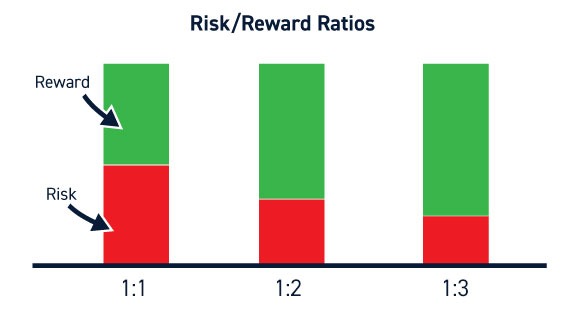Your cart is currently empty!
Stock Risk Reward Calculator

The key to successful stock trading is effective risk management, and a stock risk reward calculator is an essential tool for evaluating whether a trade is worth the potential risk. By using this calculator, investors can objectively assess the balance between the potential profit and the potential loss before making a decision. In this article, we will explore what a stock risk reward calculator is, how it works, and how you can use it to make informed decisions in the stock market.
Risk Reward Ratio Calculator
1. What is the Risk Reward Ratio?
The risk-reward ratio is a measure used by traders and investors to compare the amount of potential loss (risk) with the amount of potential gain (reward). It is expressed as a ratio, such as 1:3, which indicates that for every unit of risk, there is a possibility of earning three units of profit.
For example, if you risk INR 500 with the potential to make INR 1500, the risk-reward ratio is 1:3. A higher ratio, such as 1:3 or greater, is generally considered favorable because it means that the potential profit outweighs the risk.
2. Why Use a Stock Risk Reward Calculator?
A stock risk reward calculator helps traders evaluate whether the potential reward justifies the risk involved in a trade. Here are some benefits of using such a calculator:
Objective Analysis: The calculator provides a clear, numerical evaluation of a trade’s potential, helping traders make objective decisions.
Improved Risk Management: By calculating the risk-reward ratio before entering a trade, investors can determine if the potential return is worth the risk, promoting better risk management.
Quick Evaluation: The calculator simplifies the process of assessing different trades, allowing traders to focus on those with the most favorable outcomes.
3. How to Use a Stock Risk Reward Calculator
A stock risk reward calculator requires three key inputs:
- Entry Price: The price at which you plan to enter the trade.
- Stop-Loss Price: The price level at which you will exit the trade if it moves against you to limit your loss.
- Target Price: The price level at which you plan to make a profit if the trade moves in your favor.
Risk is calculated as the difference between the entry price and the stop-loss price, while Reward is calculated as the difference between the target price and the entry price.
The formula for calculating the Risk Reward Ratio is:
For example, if your Entry Price is INR 1000, your Stop-Loss Price is INR 950, and your Target Price is INR 1200, then:
- Risk = Entry Price – Stop-Loss Price = 1000 – 950 = INR 50
- Reward = Target Price – Entry Price = 1200 – 1000 = INR 200
The Risk Reward Ratio would be:
This means that for every rupee risked, there is a potential reward of four rupees, indicating a favorable trade setup.
Click below to download the spreadsheet and explore practical examples of risk-reward calculations for informed trading decisions.
4. Setting Up a Stock Risk Reward Calculator in Excel
Using Excel to create a stock risk reward calculator is a great way for traders to manage their analysis. Here’s how to set it up:
Step 1: Define Key Columns
- Column A: Entry Price
- Column B: Stop-Loss Price
- Column C: Target Price
- Column D: Risk
- Column E: Reward
- Column F: Risk Reward Ratio
Step 2: Enter Formulas
- Risk Calculation: In Column D, use the formula
=A2 - B2to calculate the risk. - Reward Calculation: In Column E, use the formula
=C2 - A2to calculate the reward. - Risk Reward Ratio: In Column F, use the formula
=D2 / E2to calculate the risk-reward ratio.
5. Practical Example of Using a Stock Risk Reward Calculator
Consider a scenario where a trader wants to evaluate a trade with the following details:
- Entry Price: INR 1500
- Stop-Loss Price: INR 1450
- Target Price: INR 1650
Using the stock risk reward calculator in Excel:
- Risk:
1500 - 1450 = 50 INR - Reward:
1650 - 1500 = 150 INR - Risk Reward Ratio:
50 / 150 = 1:3
This means that for every rupee risked, the trader stands to gain three rupees, indicating a favorable trade setup.
6. Benefits of Using a Stock Risk Reward Calculator
Objective Evaluation: The calculator helps traders objectively evaluate whether a trade setup has a favorable risk-reward ratio.
Consistency: By using a calculator, traders can evaluate every trade consistently, which is crucial for disciplined trading.
Better Risk Management: Focusing on trades with favorable risk-reward ratios helps traders manage their risk more effectively, improving overall profitability.
7. Incorporating Risk Reward Ratios in Trading Strategies
The risk-reward ratio should be a core component of any successful trading strategy. Here are some ways to incorporate it effectively:
Entry and Exit Decisions: Use the risk-reward ratio to determine whether a trade is worth entering. Only consider trades with a favorable ratio, such as 1:2 or higher.
Setting Stop-Loss and Target Prices: Use the risk-reward ratio to set realistic stop-loss and target price levels, ensuring a balanced approach to risk and reward.
Reviewing Trade Performance: Analyze past trades to see how well your risk-reward strategy worked. This helps in refining your approach for better profitability.
8. Application Across Different Asset Classes
The stock risk reward calculator can be used for various asset classes, such as:
Stocks: Use the ratio to evaluate potential risks and rewards for individual stocks, helping decide on buy or sell decisions.
Forex: In currency trading, the risk-reward ratio helps ensure that trades are taken with calculated risks, given the high volatility of the forex market.
Commodities: For commodities like gold or oil, the ratio helps assess whether a trade is worth pursuing based on potential risk and reward.
Cryptocurrencies: The highly volatile nature of cryptocurrencies makes risk management crucial, and a risk-reward calculator can help set realistic targets.
9. Tools Available at RajeevPrakash.com
For traders seeking an easy-to-use online tool, RajeevPrakash.com offers a Stock Risk Reward Calculator that allows traders to evaluate potential trades quickly. By entering your entry price, stop-loss, and target price, you can instantly determine if a trade setup is favorable.
This tool is particularly helpful for both beginners and experienced traders looking for a convenient way to assess their trades and make informed decisions.
10. Common Mistakes When Using the Risk Reward Ratio
While the risk-reward ratio is a powerful tool, there are common mistakes traders should avoid:
Ignoring Market Trends: The risk-reward ratio should not be the only factor considered when making a trading decision. Consider market trends, news, and economic conditions as well.
Setting Unrealistic Targets: Unrealistic profit targets can lead to an inflated risk-reward ratio. Set achievable and reasonable targets.
Neglecting Overall Risk Management: The risk-reward ratio is just one part of a broader risk management strategy, which should also include position sizing and risk exposure.
11. Conclusion: Mastering Risk Management with a Stock Risk Reward Calculator
A stock risk reward calculator is a valuable tool for any trader or investor looking to manage their risk effectively and make informed decisions. By calculating the risk-reward ratio, traders can ensure that each trade has a favorable balance between risk and potential reward, leading to better profitability over time.
Whether you create your calculator in Excel or use the online tools available at RajeevPrakash.com, incorporating the risk-reward ratio into your trading strategy is essential for success. It helps traders maintain discipline, make objective decisions, and evaluate trades consistently to achieve better outcomes.

Download The Financial Calculator App
Discover all the incredible features of our app designed to enhance your experience. From intuitive tools to unique services tailored for your needs, the app offers endless possibilities. Don’t miss out—click the link below to learn more and see how it can make a difference in your life today.

Mr. Rajeev Prakash
Rajeev is a well-known astrologer based in central India who has a deep understanding of both personal and mundane astrology. His team has been closely monitoring the movements of various global financial markets, including equities, precious metals, currency pairs, yields, and treasury bonds.
